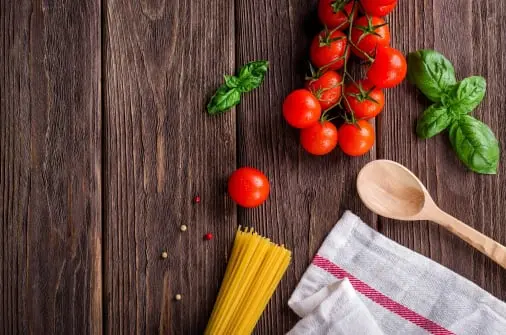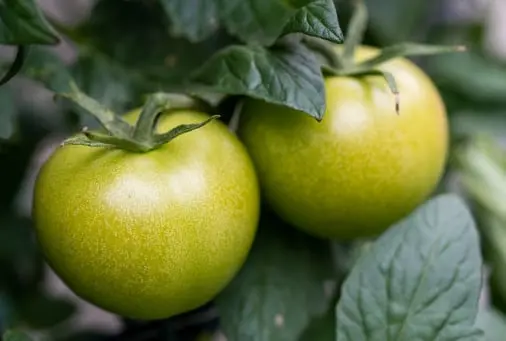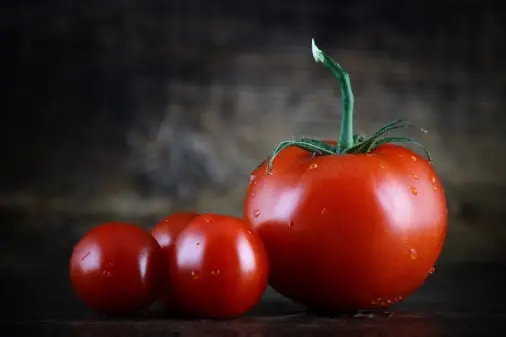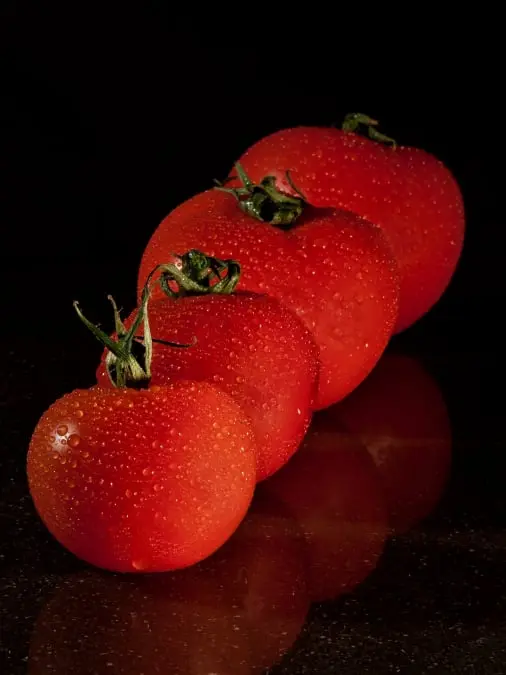Tomato traceability app:
Tomato traceability app for maximum tomato food safety in tomato packhouses: tomato inventory traceability, sales, and QC. Perform tomato traceability recalls and audits for QMS, recall up and down the tomato supply chain.

Tomato Traceability during production
View Traceability App Specifications.
Tomatoes, Salmonella, and Traceability – National Consumers League
I love tomatoes. Home grown, store bought, on the vine, off the vine, grape and cherry tomatoes, doesn’t matter, I love them all. But over the past few months, as the Food and Drug Administration suspected tomatoes as the source of a salmonella outbreak that sickened 1,300 consumers in the United States and Canada, I’ve begun to worry that tomatoes could go the way of the Edsel. The industry has lost an estimated $250 million, with the fruit rotting on the vine. (Yes, tomatoes are a fruit!) You have to feel terrible for tomato producers as the FDA has struggled to pin down the source of the foodborne pathogen.
Tracing what fruit or vegetable is the source of an outbreak like salmonella, even with advances in technology, is still dependent on local health officials and a poor or nonexistent trace-back system. Some local health departments are better than others. In the case of tomatoes, in mid-May the FDA announced a Salmonella outbreak and focused on tomatoes alone, but it wasn’t until July 9 that FDA’s warnings were expanded to include jalapeños. A bioterrorism law passed in 2002 was supposed to set up systems to enable tracing back through the food supply to find the source of microbes like Salmonella. In this recent outbreak, however, investigators were rifling through paper invoices instead of computer records. The system is so laborious that many times investigators don’t learn what made people sick, or by the time they do, the outbreak is over. Meanwhile, when tomatoes or peppers or other foods are implicated, consumers steer clear, restaurants steer clear, and the growers and everyone in the chain of production lose millions.
Trace-back systems with identifying information on each piece of produce would help solve this problem. I’ve seen infrared technologies designed to do just that. The FDA says that three key components are needed for trace back systems to work: a unique identifier that follows each food item from field to consumer, electronic record keeping and a common framework for sharing information among all the players.
Rep. John Dingell (D-Mich) is working on legislation that would incorporate a tracing system, and he hopes to bring it to a floor vote this year. Dingell’s House Energy and Commerce Committee is holding a hearing today on the salmonella investigation.
And though the produce industry has resisted trace back systems because of the expense and fear that their products might receive negative attention, a quarter of a billion dollars in losses might make produce growers more receptive to change that will save them money in the long run.

Tomato packhouse hygiene checklist
Another move in the right direction is the federal law—supported by the National Consumers League—that becomes effective later this year requiring a country-of-origin label for all food, even if it’s U.S.-grown. Those labels provide an opportunity to add extra information, such as a unique tracking number. State and local heath departments need to coordinate their food safety efforts, while the federal government adds to the mix a far more accurate traceability system. This will not only protect consumers but it will protect the industries that produce the vegetables and fruits we love, like tomatoes.
Technological advances result in new traceability configurations that, however, cannot always secure transparency and food safety. Even in cases where a system guarantees transparency, the actual consumer involvement and a real consumer-based perspective cannot always be ensured. The importance of such consumer centricity is vital, since it is strongly associated with effective supply chains that properly fulfil their end-users’ needs and requests. Thus, the objective of this paper was to explore the level of consumer centricity in food supply chains under a traceability system. The methodological approach employed a framework of two studies validating subsequently a similar set of variables, using initially consumers data and then supply chain actors data. The supply chain of sustainable tomato was selected to design the studies. The level of agreement between datasets suggested the level of the supply chain consumer centricity. Findings showed health, trust, quality, nutrition, and safety-related values to be significant for the consumers towards accepting a traceability system. The supply chain actors also accepted a traceability system based on the fact that their customers’ needs rely on the exact same beliefs, indicating a high level of consumer centricity. The current work underlines the magnitude of consumer centricity in food supply chains and provides an easy and straightforward framework for its exploration. Key implications suggest the design of more effective supply chain and consumer-based strategies for the food industry. Policymakers could also adopt the concept of consumer centricity to further improve the food industry. View Full-Text
Traceability key tomato issue
More than 550 people in 32 states sickened, and 50-plus hospitalized. More than $100 million in losses to the tomato industry.
The costs of one of the largest salmonella outbreaks linked to tomatoes still are being tallied, just as are the effects on consumer confidence. For the short term, consumers took in stride the removal of tomatoes from restaurant menus and store shelves.
While some fast-casual operators temporarily pulled tomatoes from their brands' menus, others did not.
"We changed the kind of tomato that we were using, but we did not have to eliminate them altogether," said Alan Hixon, president and chief operating officer of Dallas-based Freebirds World Burrito. "We work with a national source/local provider network that was able to find us an FDA-certified product and get it into our facilities immediately. They audited the supply chain carefully from origin to our doors."
Of those that did stop serving tomatoes, the average product halt about was five days.
Needham, Mass.-based Fresh City stopped serving tomatoes for six days even though they would have been able to receive a supply of good ones after only two.
"From speaking to our guests, and what they had heard in the news, we felt that their expectation was that we would not serve tomatoes until the situation was better understood," said Larry Reinstein, Fresh City president and CEO. "Customers in general did not change their ordering habits and appreciated us doing the right thing, though there was a small percentage of guests who were looking for tomatoes and had no knowledge of the problem."
Fresh City introduced a cucumber salsa to replace its regular, tomato-based salsa used on burritos.
"Otherwise, we asked if they wanted something else to replace tomatoes on sandwiches and salads," Reinstein said.

Tomato Traceability management
Industry tomato traceability solutions
For the long term, federal agencies and others are looking for federally mandated safety standards as a measure toward preventing the next big outbreak. Experts say federal mandates for safe handling of fresh produce from the farm to all ends of the supply chain is a key component in such prevention.
The current tomato handling and supply process is complex, and the U.S. Food and Drug Administration would like to implement measures to improve the traceability of the produce in order to speed up investigations.
Although none of the operators Fast Casual spoke with believes the FDA overreacted in their tomato recall, Ken Clark, president and chief operating officer of Farmer Boys Food Inc., said the administration could have conducted food-safety tests earlier in the process even though they had no choice but to remove tomatoes not cleared as safe.
"It's my understanding the first person to report sick was in April and others were periodically reported until the announcement in June," Clark said. "They could have started the inspections earlier without issuing a warning and then six to 10 days later approve many of the areas for use."
Farmer Boys already was purchasing California tomatoes approved by the FDA and so did not stop serving tomatoes during the outbreak.
Positive lot identification required. With tomatoes and food-borne illness, one problem lies in the lack of identification mechanisms, making trace-backs difficult, as evidenced by the FDA's difficulty in quickly pinpointing the source of the outbreak. Adding to the difficulty is that tomatoes from different farms may be mixed together, making it even more difficult to locate the source of an outbreak. Commingling occurs, for example, when buyers such as restaurants request a specific-size tomato, so that batches of produce from several farms are hand-sorted and packed together before shipment.
Additionally, FDA trace-back investigations are complicated by the fact that tomatoes do not have individual identifiers such as barcodes, and tomatoes grown on different farms are often commingled in the packing process, said FDA spokesperson Sebastian Cianci.
States wanting more food-safety regulations have started to take matters into their own hands.
Florida's regulations require Positive Lot Identification (PLI) for every package of produce to leave a packinghouse or a supplier. The PLI allows for clear identification of the source of the tomatoes, but not necessarily the date it was grown.
Other growers' groups, such as the California Tomato Growers, also have developed scientific-based food-safety standards to which all members are required to adhere. Those industry standards include multiple, random audits conducted by the California Department of Food and Agriculture inspectors.
However, Donna Garren, vice president of health and safety regulatory affairs for the National Restaurant Association, said that voluntary food-safety programs for handling fresh produce — even the strong ones already in place throughout the agricultural and supply industry — are obviously not working.
"We need to make sure that there's compliance," Garren said.
The FDA seems to have the start of such an identification system in place as it now allows tomatoes from southern Florida and Baja, Mexico, to enter the U.S. supply chain only if tomatoes are accompanied by a certificate that they were grown after the initial outbreak.
Until federal mandates are place, the restaurant industry also can do what it can to ensure the fresh produce it receives has been handled properly at all ends of the supply chain.

Tomato Supplier Traceability
Traceability a key issue in tomato scare
This study aimed at evaluating the effect of organic and conventional farming systems on enzymatic profiles of tomatoes so as to find a biomarker for their safe traceability and certification. Three tomato varieties (Khaki, Italian and Cherry), officially certificated and sold in fruit shops, were collected in different seasons. The fruits of each variety were standardized in analytical samples in relation to their ripeness indicators (color, sugar/acidity rate). Assays used for determining enzymatic activities were previously standardized to invertases (INV), polygalacturonases (PG), peroxidases (PO), polyphenoloxidases (PPO), catalases (CAT) and phenylalanine ammonia lyase (PAL). Enzymatic activities were correlated with the farming systems by the Principal Component Analysis (PCA). Enzymatic activities of PO, PPO, CAT and PAL proved to be useful for tomato certification and traceability, since their correlation was above 0.9. The statistical analysis confirmed that PO and CAT activities were the most promising to find a model of response to the farming system. Enzymatic profiles of both Italian and Cherry varieties were the most affected by the farming system.
More than 550 people in 32 states sickened, and 50-plus hospitalized. More than $100 million in losses to the tomato industry.
The costs of one of the largest salmonella outbreaks linked to tomatoes still are being tallied, just as are the effects on consumer confidence. For the short term, consumers seem to be taking in stride the removal of tomatoes from — and return to — restaurant menus and store shelves.
Tracing outbreak a complex issue
Although most of the tomatoes used in pizza sauce come from eitherItalyorCalifornia, areas not affected by the salmonella outbreak, growers fear the crisis could have a widespread impact.
According to the California Tomato Grower's Association, consumer demand for tomatoes is off about 60 percent, while demand from restaurants is off about 30 percent.
Some areas ofFloridastill haven't been cleared by the FDA, posing a major threat to that state's $700-million tomato industry.
While pizzeria operators have addressed the crisis in the short term, food safety officials say changes are needed to help manage such incidents in the future.
Tracing the source of the outbreak is complicated by the fact that tomatoes do not have individual identifiers such as barcodes, and tomatoes grown on different farms often are commingled in the packing process, said FDA spokesman Sebastian Cianci. The FDA would like to implement measures to improve the traceability of the produce in order to speed up investigations, he said.
Adding to the difficulty is that tomatoes from different farms may be mixed together, making tracing an outbreak even more difficult. Commingling occurs, for example, when buyers such as restaurants request a specific-size tomato, so that batches of produce from several farms are hand-sorted and packed together before shipment.
Positive Lot Identification required in tomato processing industry
Another problem lies in the lack of identification mechanisms, making trace-backs difficult, as evidenced by the FDA's difficulty in quickly pinpointing the source of this outbreak.
Florida's regulations require Positive Lot Identification (PLI) for every package of produce to leave a packinghouse or a supplier. The PLI allows for clear identification of the source of the tomatoes, but not necessarily the date it was grown. It ensures a package, or lot, can be traced backward to the farm or forward to the buyer, Roberts said.
story continues below... advertisement
PizzaMarketplace.com PizzaMarketplace.com E-Mail News Alerts Get the latest pizza news and information delivered to your inbox!
The FDA seems to have the start of such an identification system in place as it allows tomatoes from southernFloridaandBaja,Mexico, to enter theU.S.supply chain once again. Only tomatoes accompanied by a certificate showing they were grown after the initial outbreak are accepted — a system to allow the FDA to trace the source more readily.
Until federal mandates are in place, the restaurant industry can do what it can to ensure the fresh produce it receives has been handled properly at all ends of the supply chain. Knowing all the links in the supply chain is essential to preventing health crises like the current one with tomatoes, said Donna Garren, vice president of health and safety regulatory affairs for the National Restaurant Association.
The association encourages its members to develop a relationship with its suppliers in order "to ensure everyone along each point is doing what they can to ensure a safe product," Garren said. That means restaurant operators need to be aware of the food safety standards in place — and followed — by the supplier as well as the distributor, packagers and farmers in that supply chain.
Roberts agreed that restaurant operators must do their part.